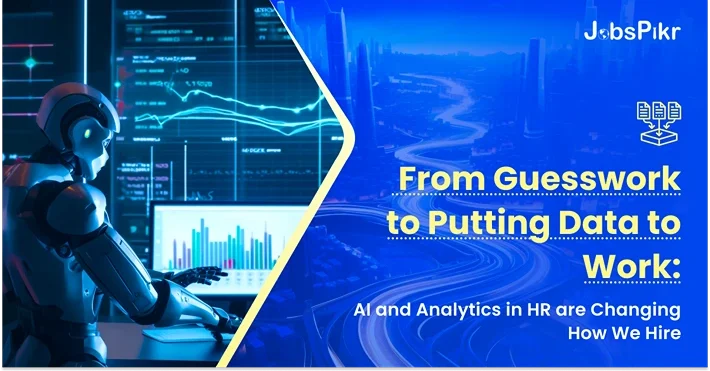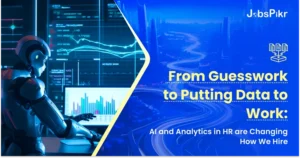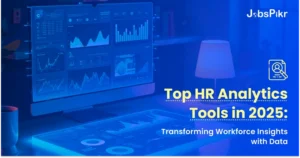Traditionally, hiring decisions were usually subjected to a concoction of decisions based on instincts, keywords on a resume, and the impression received from interviews. Recruiters would sift through hundreds of profiles, pick those that worked well with their experience, and hope that their hiring intuition would land the right candidate. With the volume, speed, and complexity of hiring increasing, this approach has started appearing less and less viable. With talent being hunted around the globe, tighter deadlines, and ever-rising expectations for diversity and retention, really, the cost of a bad hiring decision is never so high.
Instances have, of course, been there to prove that the traditional methods are insufficient; in this modern landscape, however, AI in HR is now playing the part of human intuition, teasing out patterns, highlighting insights, and identifying apt choices for the faster, smarter, and more objective decision-making of hiring teams. Whether it’s identifying the best candidates for application screening or tracking hidden predictors of performance, AI in HR allows the recruitment process to transition from an art into a science.
Turning The Tables From Guesswork To Precision: Reasons AI Has Taken Over Hiring
Finding the right candidate has always had a certain amount of grey area, especially when you weigh in the question whether the candidate will perform well in that role or fit into the respective company culture. Before, the companies attempted to base their uncertainties on manual screening, interviews, or just some gut feeling. But gut feels can only take a company so far. Today, AI in HR recruitment offers the big jump: it lets a hiring team get away from subjective appraisals and make data-backed ones.
With an AI-driven hiring system, a recruiter would be able to look at colossal datasets-from past hiring outcomes, the way candidates work or behave, benchmarks for abilities, or even current job market trends-to pretty much fastly, and more surely, make predictions. These tools are working not only to quicken the process but to Hollywood it on its head. AI locates potential; it raises flags.
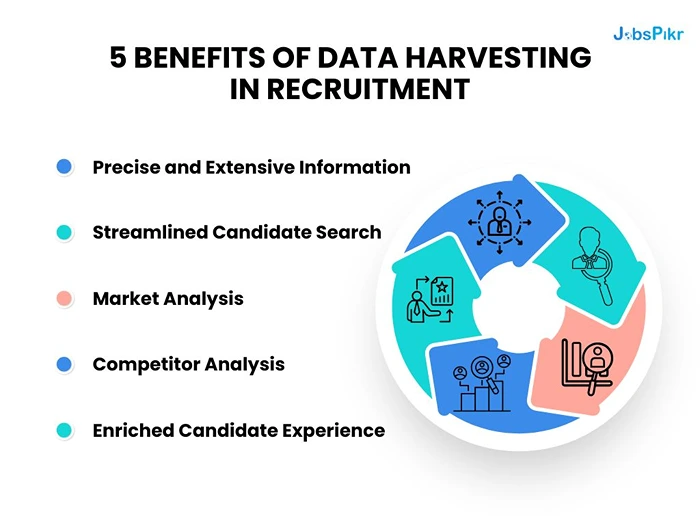
Ultimately, it is about the big things: skills actually matter, fit matters, and future performance matters. Apart from that, traditional things like cover letter matter a lot less. For companies wanting to curb bias, make the process more efficient, and scoop the best talent before their competitors do, really, AI in HR is no longer a choice-it has become a necessity.
How AI in Recruitment Drives Better Hiring Decisions
AI, in reality, is reshaping hiring decisions and not merely optimizing the candidate journey. These AI-powered tools are being built to evaluate deeper layers of fit, potential, and risk rather than simply filtering out applicants.
AI systems, in addition to assessing a skills match, rank candidates according to expected performance outcomes, hiring patterns from the past, or even conducting sentiment analysis on assessments or communications. For instance, an AI model that has been trained based on the identification of successful hires from your sales team might determine that candidates having cross-functional experience and fast career progression are likely to exceed targets, which could be very difficult to determine through a manual process.
In addition, AI reduces the clutter that sometimes blurs judgment. It attempts to standardize candidates’ evaluation and hence limits the influence of unconscious biases, gut feelings, and inconsistencies in human scoring. For recruiting personnel, this means relevant and predictive information determine who to pick, as opposed to familiar or subjective information.
Here, the value multiplies the higher the volumes are. Instead of passing the hundreds of resumes to the recruiters, a prioritized short list ranking applicants on data-backed scoring models is provided. This saves time, instills confidence in hiring decisions, and gives recruitment leaders a higher focus on candidate experience and long-term strategy.
Key Use Cases of AI in HR Recruitment Today
Right now, recruitment AI carries more than a theoretical connotation as this technology is used by organizations belonging to all industries to address real-life issues. The most impactful uses include:
1. Intelligent Resume Screening
Rather than matching by keywords, the AI model uses semantics to grasp the meaning behind the resumes and job descriptions. The system thus brings forward those candidates who are indeed qualified but perhaps do not use the right terminology-however have skills and experience matching those required. It also helps identify those transferrable skills and alternative career paths that suit the candidate.
2. Predictive Hiring Outcomes
Using the data on past hiring, interview scores, onboarding performance, or long-term retention, AI can come forth with a prediction about a possible candidate doing well for the job. These are the important metrices the recruiters need to know: to prioritize candidates that fulfill the current needs but have a long-term potential.
3. Bias Detection and Fair Hiring
New AI technology scans job description templates for biased language against certain candidate demographics; it detects uniformity among shortlists and suggests more inclusive pools of candidates. Bringing transparency into the process, AI thereby ensures that HR teams can work toward their DEI goals with minimal compromise on quality.
4. Candidate Drop-off Prediction
Machine learning models will analyze behavioral cues and signals of engagement to predict whenever a high-potential candidate will exit the funnel. Slow communication, lack of alignment, and competing offers tend to be some of the problems involved; recruiters will be in a position to nail these problems right away and engage the at-risk candidates.
5. Conversational AI for Engagement
AI chatbots have gradually taken over answering the FAQ and scheduling interviews. These tools engage with candidates in real time on a 24/7 basis, provide real-time status updates, and ensure an enjoyable experience at scale, which can be extremely useful during high-volume hiring or recruiting across different time zones.
6. Skills-Based Matching and Role Fit
AI models look past simple qualifications in determining how a candidate’s actual skills may apply to the fulfillment of a role. Using a structured skills taxonomy and real-time labor market data, AI actually helps candidates apply for roles that they might have overlooked-certainly a helpful function in instances dealing with internal mobility or lateral-move scenarios across departments.
7. Workforce Planning and Talent Forecasting
Another important application of AI in HR is proactive workforce planning. By combining patterns of attrition within the company, shifts in the external labor market, and expected time needed for the hiring process, AI can forecast talent needs sometime in the future-displacing HR leaders to initiate hiring ahead of any actual need or occurrence of gaps, thereby ensuring business continuity and reduced time-to-fill.
8. Interview Analytics and Scoring
Using NLP and sentiment analysis techniques, AI-powered interview systems are now capitalizing on analyzing interviewees’ video or written interview responses. These systems can provide accurate and consistent scoring-oriented analysis of response content, tone, and structure-aiming at removing biases of the interviewers, while exerting standardization of assessment over large-scale hiring teams.
How HR Teams Can Start Using AI Hiring Tools
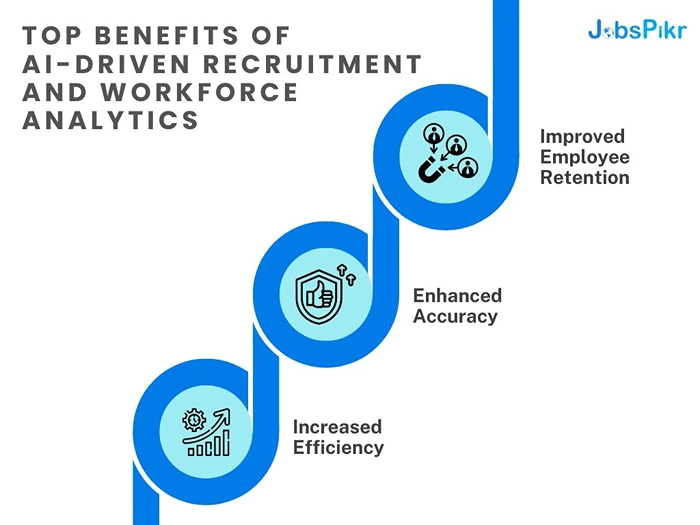
For HR leaders ready to evolve from reflexive to intelligence-based decisions, AI doesn’t require a full tech overhaul: it starts with a mindset and strategy. Here are the ways recruitment teams can begin to seize AI in hiring workflows:
1. Identify the Bottlenecks
Mapping out the recruitment funnel with one’s own hands, where do the delays happen? Is it sourcing? Screening? Offer acceptance? Following friction identification, an assessment for which AI tools best address these particular pain points can be done-whether it is automated resume ranking or engagement analytics.
2. Use Platforms with Built-in AI Capabilities
Most new ATSs and recruiting platforms embed AI features such as filtering candidates, scoring candidates, and reaching out personally. Utilize these features as a fast entry point before considering custom development.
3. Train the System with Relevant Data
The greater effectiveness of AI hinges on data quality. The system needs a feed of performance data, hiring history, and feedback loops so it may learn as time goes on. The richer and cleaner your dataset is in contextual information, the more accurate, and therefore valuable, your AI outputs will be.
4. Involve Recruiters, Not Replace Them
AI should be considered a co-pilot, not a replacement. Thus, the HR team must be trained in interpreting and weighing AI recommendations, spotting anomalies, and making final decisions using human conscience. These ensure that AI gets to work from an empowering perspective rather than from a controlling standpoint.
5. In a Small Way First, Then Scale
Give the AI application under testing a go for one role or business unit before getting into full organizational mode. This provides time to check for accuracy, fine-tune the models, and build internal confidence in the system. As mass success stories crop up, you have the push to go mainstream.
Successful implementation of AI in HR must be done with clarity and intention. Where the approach is right, even teams that are small can begin making smarter, fairer, and faster hiring decisions–without the need for a degree in data science.
The Role of AI in Hiring Bias Reduction and Supporting DEI Goals

A truly innovative promise in AI-assisted HR recruitment is the capacity to spot and reduce bias that is unconscious. While human decisions are often based on personal accounts and cultural contexts-cases in point-the AI systems can instill consistency if appropriately trained.
AI tools flag for biased language in job descriptions (gender-coded words, for example), ensure diversity in shortlisting, and remove identifier information (such as names or universities) that can confound bias. Some platforms also do comparisons against diversity metrics to help build more inclusive talent pipelines.
With ethical policing, AI supports companies in real-time to assess diversity goals, identify systemic discrepancies, and make corrections before bias takes on the status of hard embedded reality in hiring decisions. It swiftly turns DEI from an after-the-fact tick box to a proactive data discipline that allows departments headed by recruiters to build not just bigger but more representative teams.
Labor Market Intelligence for Smarter Sourcing in Real-Time
Hiring through AI engines is not just limited to internal data-it is now increasingly supported by external, real-time labor market information. By scraping millions of job postings, candidate profiles, and trends within industries, AI tools will provide signals about where talent is located, which skills are emerging, and what your compensation stands against the wider market.
Such kind of intelligence allows recruiters to shift at a moment’s notice: if local supply for a role is drying up, AI can push for adjacent geographies or skill sets; if a certain skill is trending among competitors, you might want to highlight it in your next hiring round. Being able to read the market dynamically rather than coming to conclusions based on out-of-date reports gives and sets the HR team ahead of the competition.
AI-Driven Hiring Metrics: What Can Be Measured
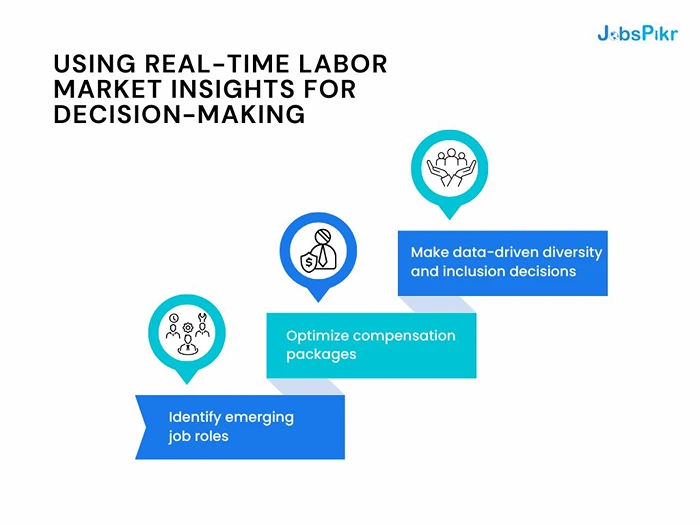
With the aid of AI in hiring, HR leaders get down to granular and actionable metrics that extend far beyond the simple time-to-fill or cost-per-hire. Here are some analytics that can now be considered:
- Fit Scores: Quantify how much a candidate matches role expectations based on skills, experience, and inferred potential.
- Hiring Velocity: Track the speed at which roles progress through the pipeline in each stage; it automatically points out bottlenecks.
- Bias Indexes: Track representation by gender, ethnicity, or educational backgrounds at various funnel stages.
- Engagement Drop-off Points: Specify when and why high-quality candidates drop off and use that information to fix communication gaps or offer delays.
- Post-Hire Success Predictions: Track pre-hire data with performance, retention, and satisfaction scores months after joining.
With such metrics, the recruitment process is moved from a reactive operation to one that provides concrete predictions, thus continuous improvements are made that align with corporate goals.
What to Look for in an AI-Driven Recruitment Solution
Not all AI tools are created equal. On the up, HR teams need to be very careful regarding their choice of platform. Here are some of the major features to consider when putting an AI recruitment solution to the test:
- Transparent Scoring Logic: Make sure the platform fosters an explanation as to how candidates are ranked and scored-black-box models could lead to trust issues and compliance risks.
- Bias Mitigation Capabilities: Seek fairness checks that can go through the sourcing, screening, and selection and mitigate bias wherever detected.
- Customizable Workflows: The tool should be able to adjust to your hiring process instead of making you change it.
- Real-Time Market Benchmarking: Seek those platforms that provide labor market intelligence to give a worldly context to skills, salaries, and sourcing decisions.
- Feedback Loops for Continuous Learning: A superior system gets better over time by learning from hiring outcomes and recruiter feedback.
- Scalable Integrations: The tool will integrate smoothly with your ATS, CRM, or HRIS platforms for minimal disruption.
Selecting the right AI solution is not just about automation; rather, you are setting your team up for long-term strategic advantage.
Human Driven and AI Powered: The Future of Hiring
A real generational change in attracting, evaluating, and retaining talent, AI in HR is here to stay. As recruitment grows increasingly competitive and complex, the firms that succeed will be those using data for informed choices, not mere guesswork. Finding the right candidates in a quicker timeframe, amassing high-performance teams, or diversifying teams-the aim of AI is to give HR professionals everything they need to act with precision and purpose.
However, It’s actually human judgment that truly powers AI-powered hiring. It is liberating recruiters to do what they do best-building relationships, shaping culture, and associating talent to long-term business strategy. Hiring becomes not only faster and smarter but also more human when mechanisms and humans work in tandem.
The path is clear forward: whoever adopts AI today is going to become the benchmark for how modern hiring should be done in 2025 and thus beyond.
Would you like to strengthen your AI-based hiring strategy with real-time labor market data?
JobsPikr collates, structures, and supplies information concerning job postings, talent signals, and workforce perspectives from global markets allowing you to construct smarter models, benchmark better, and hire faster. Explore our AI-ready job data solutions.
Sign up to JobsPikr today!
